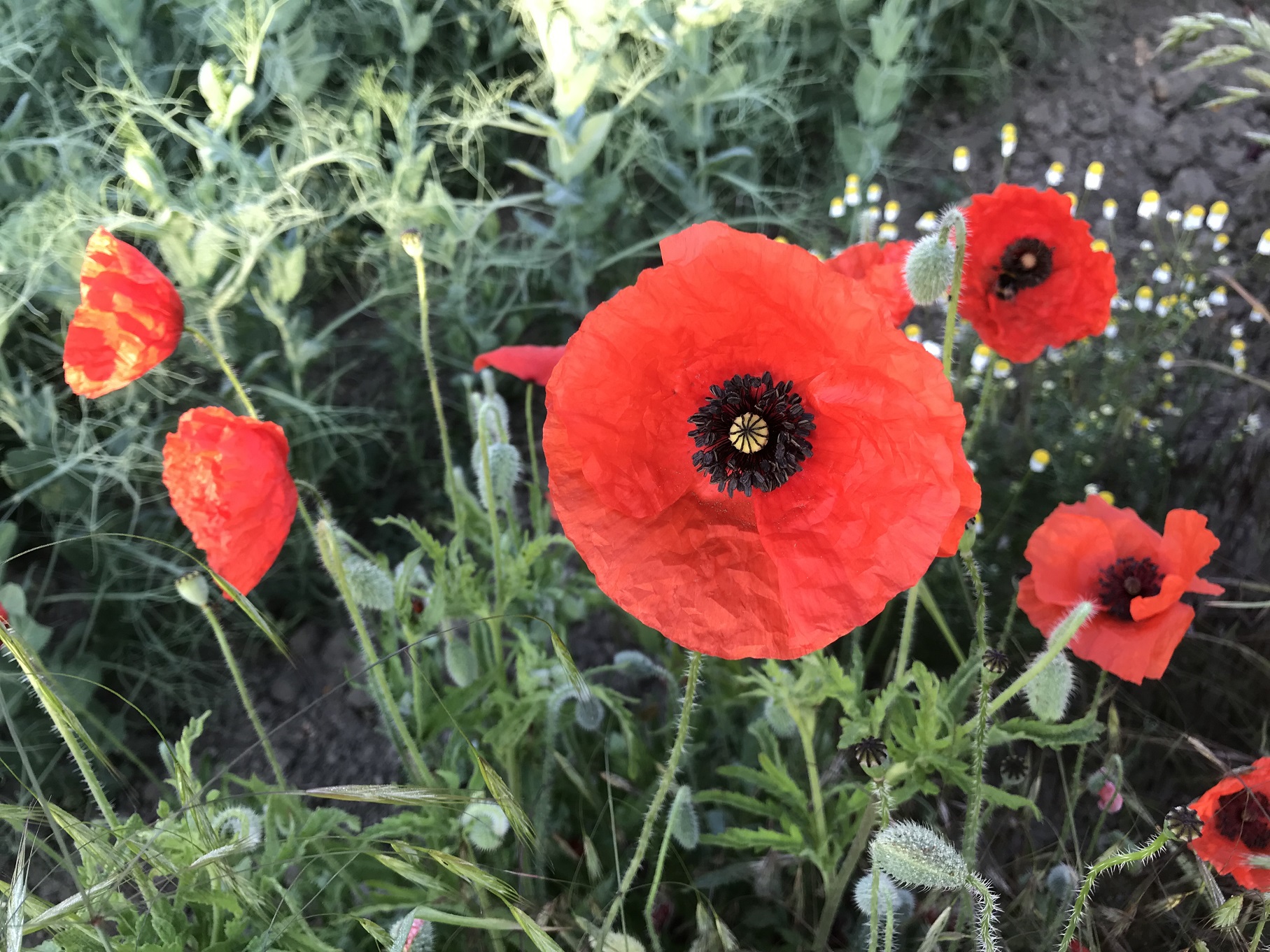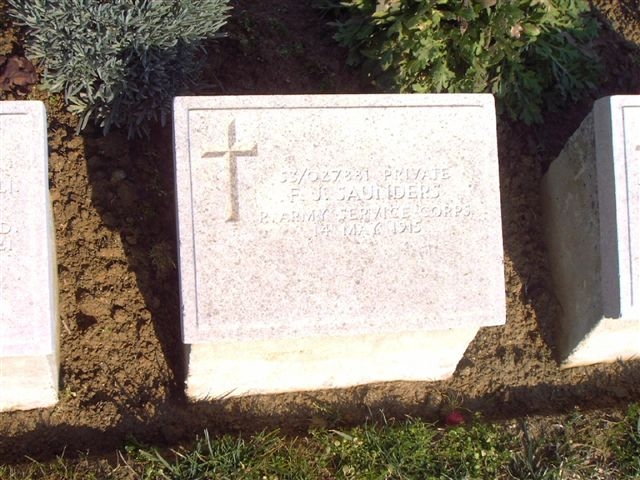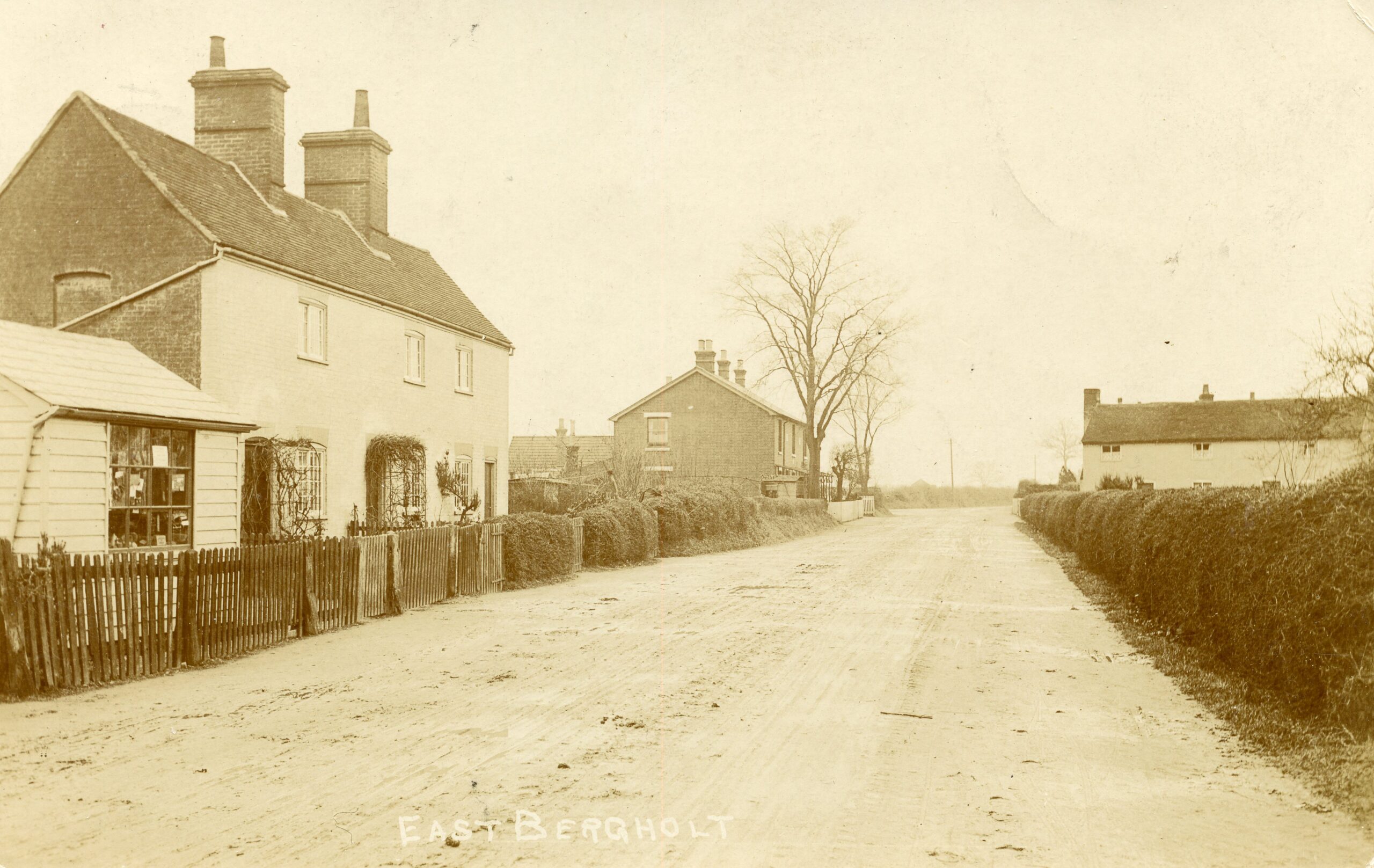John Saunders (1891 - 1915)
A Baker by trade, Fred (as he was known) volunteered to join the Army in November 1914. He was killed six months later, whilst serving with the 50th Field Bakery on the Gallipoli Peninsula.
- 56
- Died in the Great War
- 51.978245, 1.023171
Details
| Name: | John Frederick Saunders |
| Service: | British Army |
| Unit: | 50th Field Bakery, Army Service Corps |
| Regimental Number: | S3/ 027881 |
| Rank: | Private |
| Date of Death: | 14th May 1915 |
| Age: | 23 |
| Buried: | Row D, Grave 16, Lancashire Landing Cemetery, Gallipoli, Turkey |
Family Background and Early Life
John Frederick Saunders – or Fred, as he appears to have been called by his family – was born at Hilborough, near Swaffham in Norfolk, on 21st December 1891. 1 John’s name at birth was registered as John Frederick Saunders, and that is his name on the East Bergholt War memorial. He joined the Army under the name of as Frederick John Saunders, and therefore that is the name that is shown on all official Army records, and also his initials on his headstone. He was the third child of John Saunders – a Blacksmith by trade – and his wife Jane (nee Ward), who both came from the local area.
John and Jane had married in 1889, and together had at least 9 children. Children.
The Saunders family appear to have moved at least once in the surrounding area before they settled in Great Ellingham (just outside Attleborough) for several years at the start of the 1900s.
At some point between 1906 and 1910, the Saunders’ left their native Norfolk and moved to Aldborough Hatch, near Ilford in Essex. Before then however, Fred himself left the family home and moved to East Bergholt. Here, he was employed by his uncle, William Saunders at the Victoria Bakery, on the corner of Heath Road and Woodgates Road.
At that time, the village had three bakeries: One at the top of Rectory Hill near the Church, which was run by the Bedwell family; one at Burnt Oak, run by the Stowe family and Victoria Bakery run by the Saunders family.
In February 1911, William Saunders died at the age of 40, leaving the business in the hands of his widow Annie. Following William’s death, Fred seems to have taken over the entire work in the Bakery, and in the April 1911 Census, Annie describes Fred’s occupation as Foreman Baker.
Joins the Army
On Wednesday 11th November 1914, Fred volunteered to join the British Army. As a volunteer he was theoretically able to choose which part of the Army to join – John selected – or was guided towards – the Army Service Corps.
The role of the Army Service Corps role was to provide the soldiers with food, equipment and ammunition. This included providing the troops with bread.
In November 1914, the Ottoman Empire (Turkey) entered the War on the German side. Britain and France planned to gain control of the Dardanelles Straights, a move which – it was hoped – would lead to the capture of Constantinople, and encourage the Ottoman Empire, to sue for peace. In the process, it would also open up a supply route to Russia.
Early attempts by the British and French navies to force the Straights using obsolete battleships failed. The Allies plans then turned to taking control from the land, by a landing on the adjacent Gallipoli Peninsula.
To that end, the British started to form a Mediterranean Expeditionary Force, made up of British, Australian, New Zealand and Indian troops.
Fred was posted to the 50th Field Bakery, and they sailed from England on 23rd February 1915, initially bound for Egypt. The purpose of the Field Bakery was – as exactly that, to produce bread for the troops in the field. In the case of the 50th Field Bakery, they were to provide the bread for the 29th Division. 2 A Field Bakery’s complement consisted of one officer and 92 men. Each Field Bakery could produce enough bread for more than 20,000 men.
Gallipoli
On 25th April 1915, the Allies landed in two locations on the Gallipoli Peninsula – the British and French around Cape Helles at the tip of the Gallipoli Peninsula, and the Australian and New Zealand Army Corps (ANZAC) on the western coast at what came to be known as “Anzac Cove”.
The 29th Division landed at two beaches at Cape Helles; after meeting strong Turkish resistance and heavy casualties, they managed to establish a beachhead.
Unfortunately, the War Diary for the 50th Field Bakery has not survived, so we do not know exactly when they landed on the Gallipoli Peninsula. However, it seems likely that in the first days of the landings, the Field Bakery conducted their work from Lemnos, and the bread was then shipped to the troops on the Peninsula.
There is however a record that they were starting to set up the Field Bakery at Cape Helles in early May, seemingly near what was later called Bakery Beach. One soldier wrote in his diary on 10th May:
“In a little gully between “W” Beach and “X” Beach preparations are being made to start a field bakery, and we are promised real bread in a few days.” 3 From “Gallipoli Diary” by Major John Graham Gillam D.S.O., George Allen & Unwin Ltd, London, 1918. (John Gillham was a supply officer with the 29th Division during the Gallipoli Campaign).
A large part of the reason that the Field Bakery was being situated in the gully, was that it offered some protection from the Turkish shelling of the beachhead.
On 14th May 1915, Fred was killed. We do not know the cause, but it may quite possibly have been as a result of shelling by Turkish artillery.
Fred was buried in a cemetery that had been started close by.
Postscript
After the War, the cemetery where Fred was buried was retained by the Imperial War Graves Commission and is called Lancashire Landing Cemetery. 4 The Cemetery got its name because it overlooked “W” Beach, subsequently nicknamed Lancashire Landing by the troops. It was where the 1st Battalion of the Lancashire Fusiliers successfully landed against heavy Turkish opposition on the morning of 25th April 1915. Victoria Crosses were subsequently awarded to 6 men from the Battalion for their actions that morning, prompting the press to characterise the event as “6 V.C.’s Before Breakfast”.
Victoria Bakery appears to have closed shortly after Fred joined the Army. Annie Saunders died in 1927 and was buried with William in East Bergholt Cemetery.
Copyright © Mark Ashmore, 2024
- 56
- Died in the Great War
- 51.978245, 1.023171



